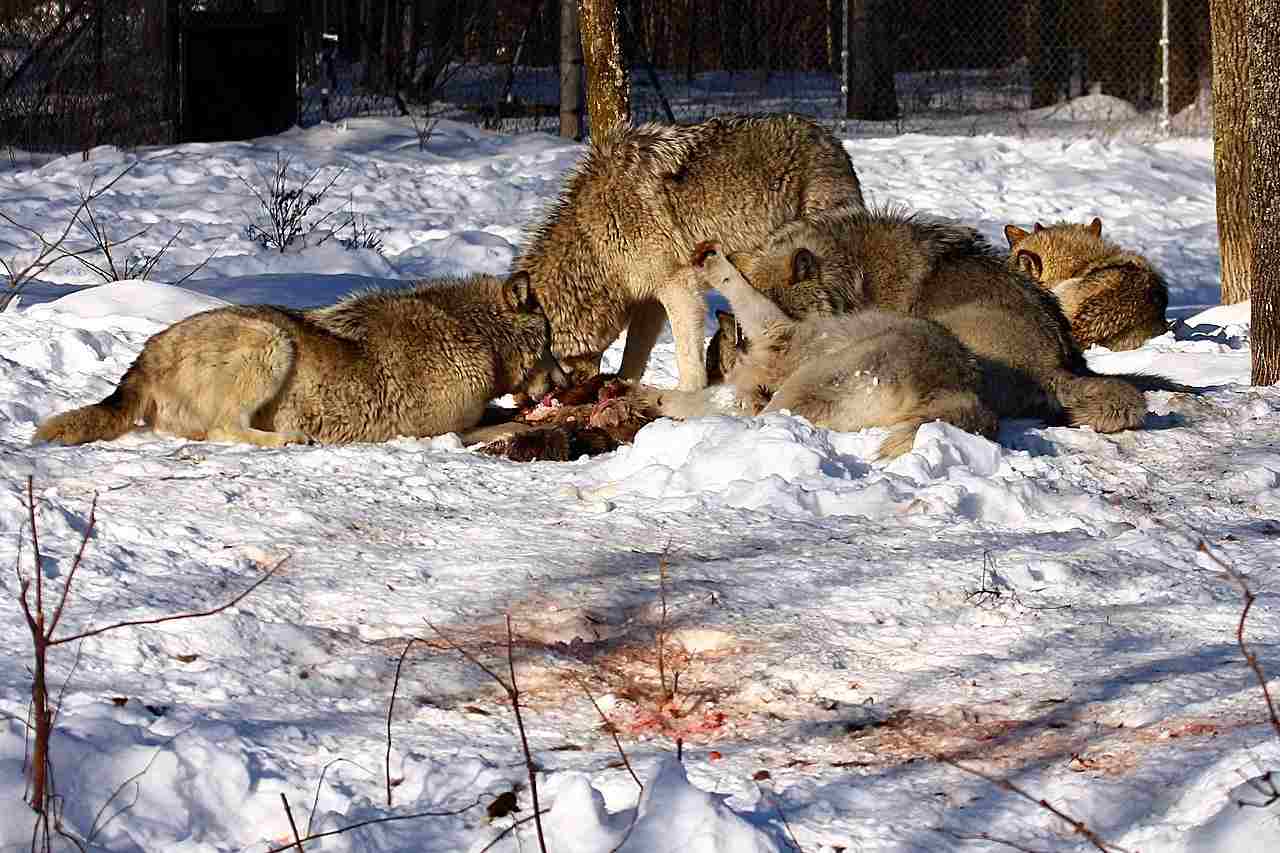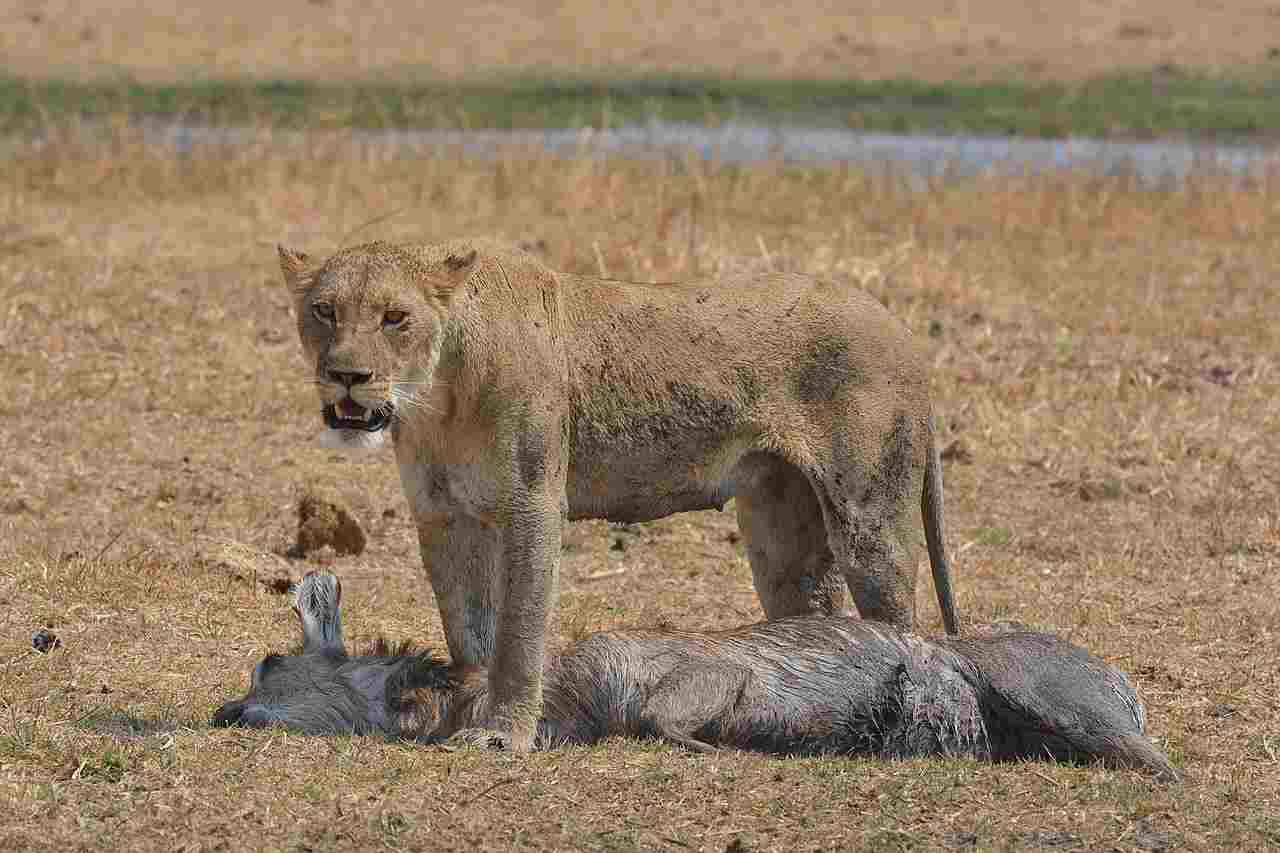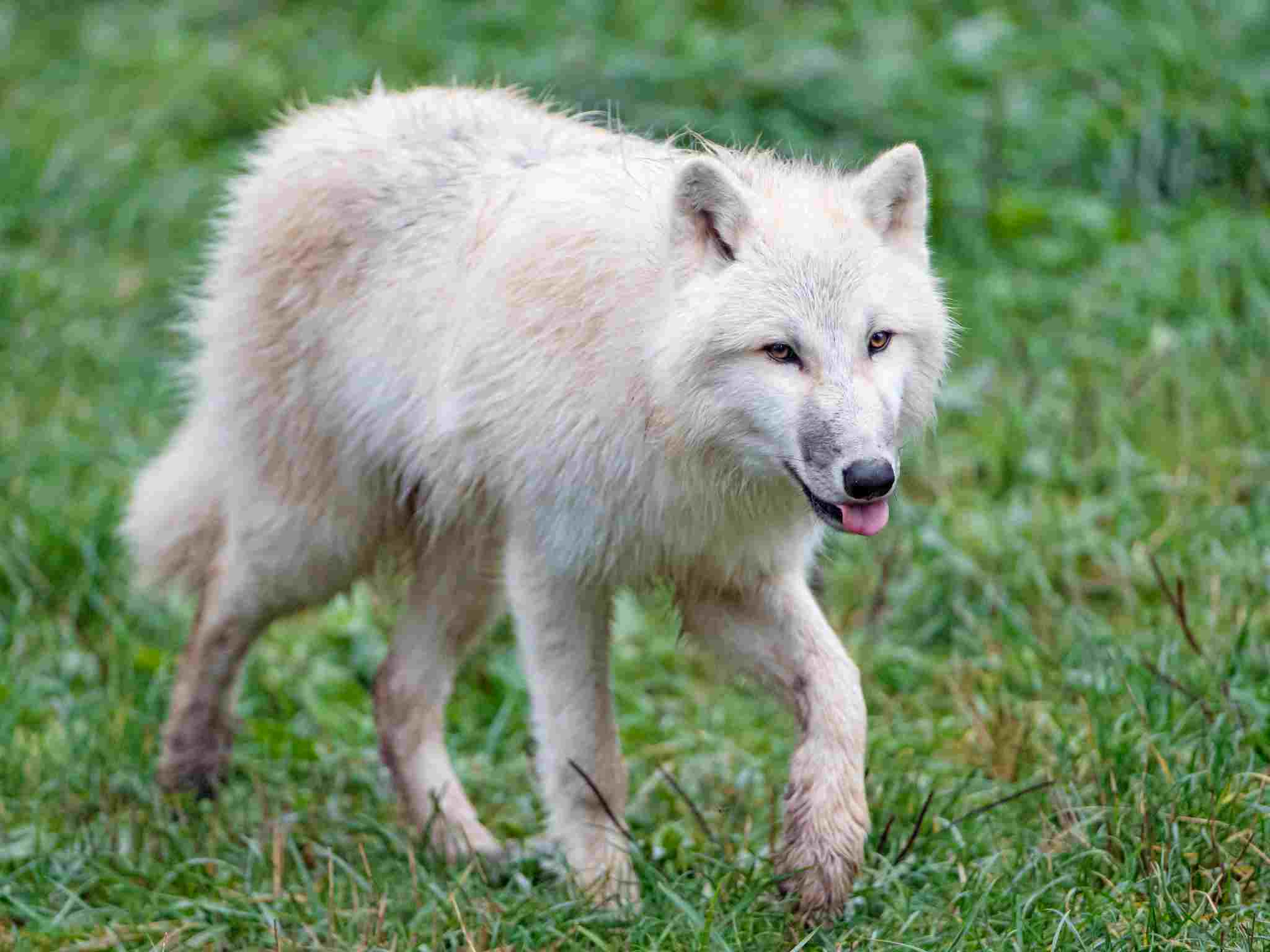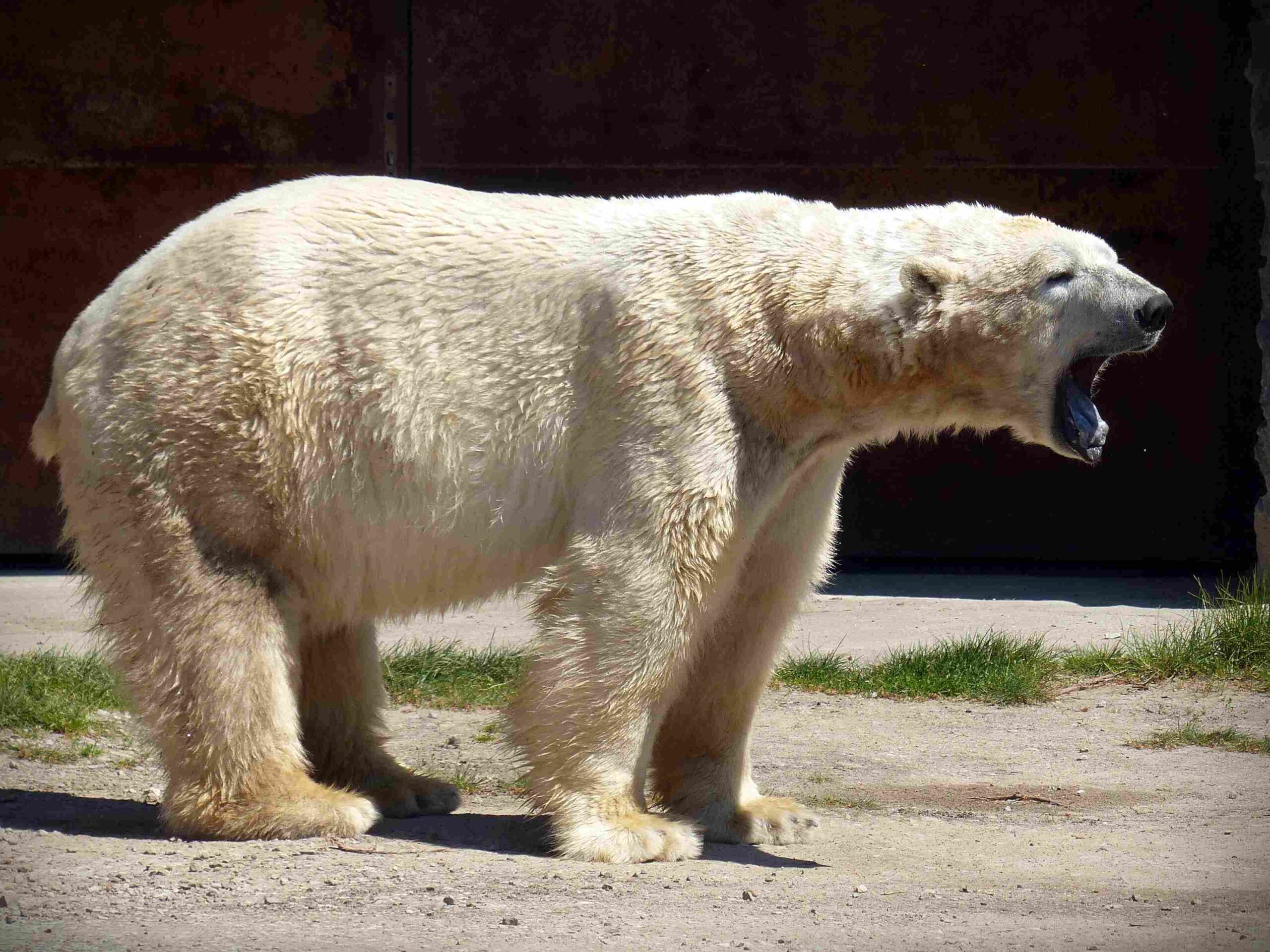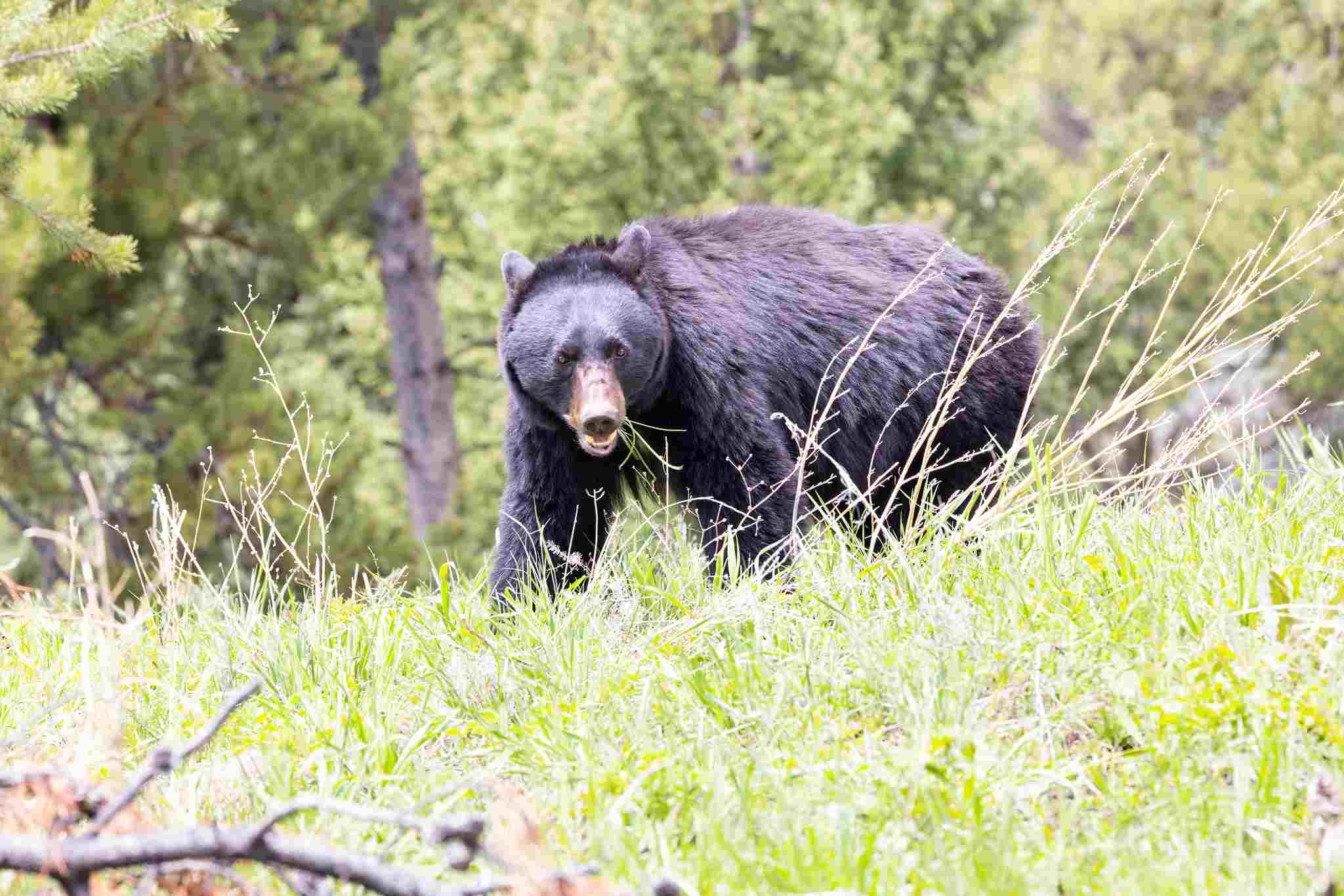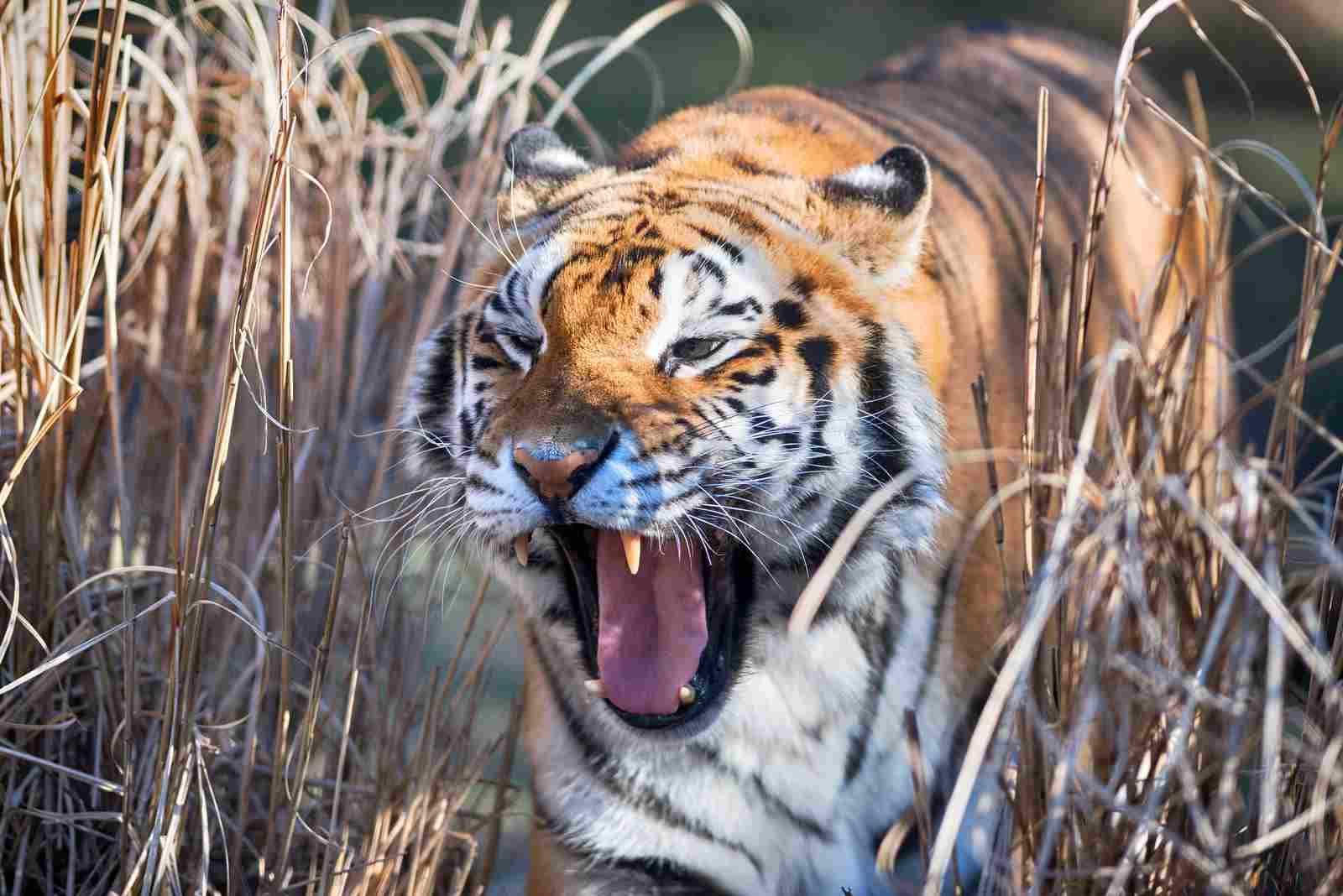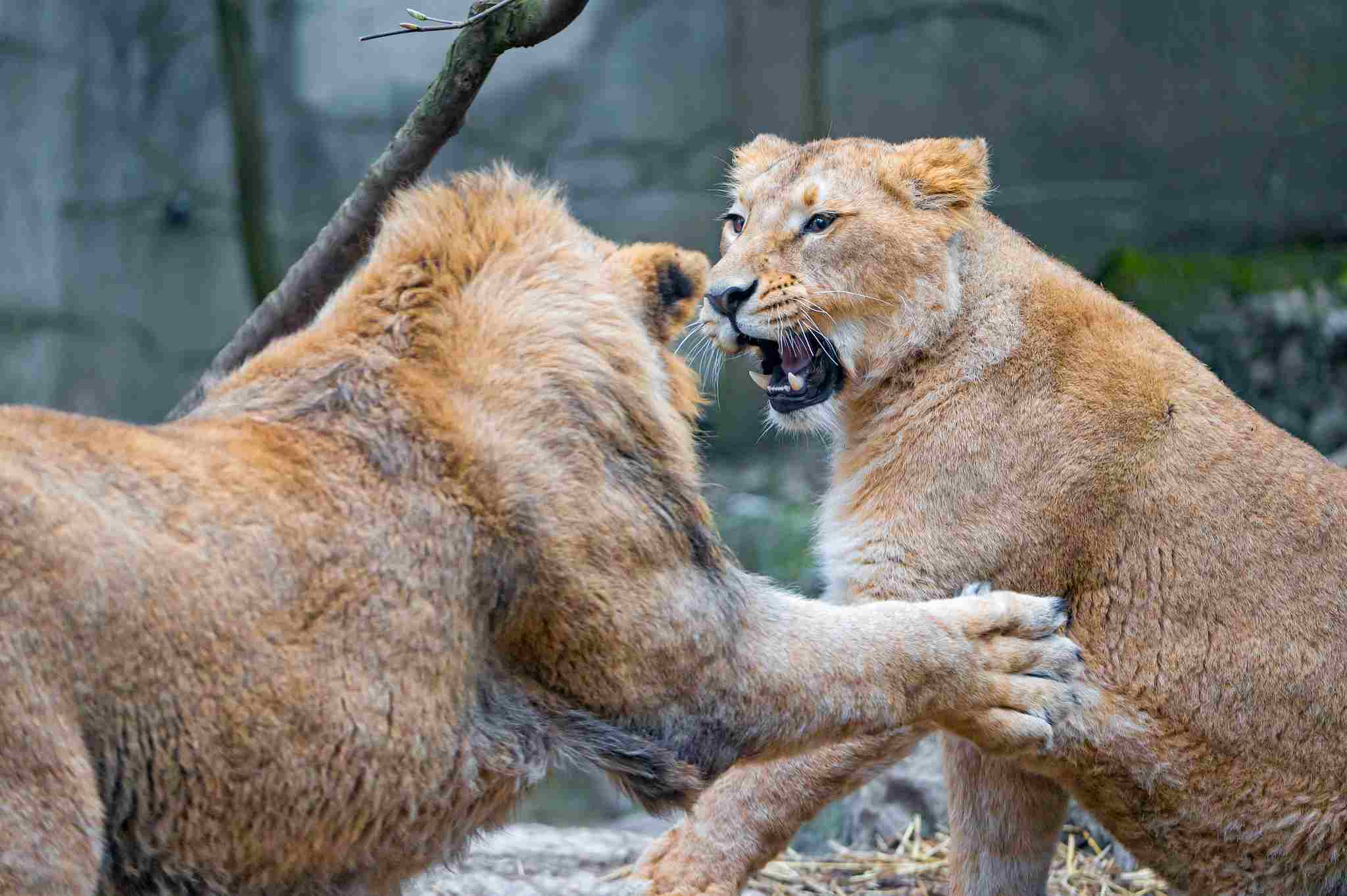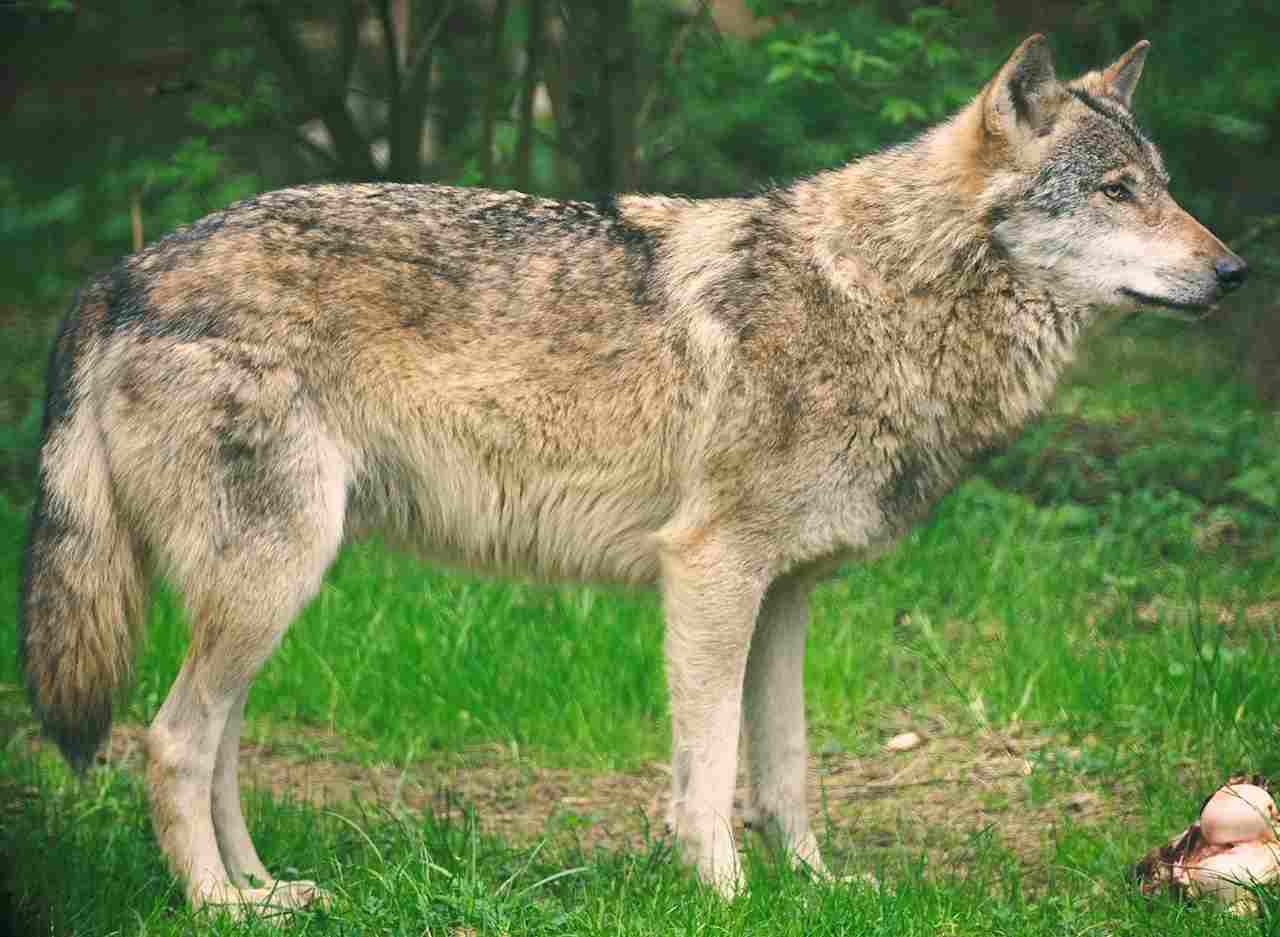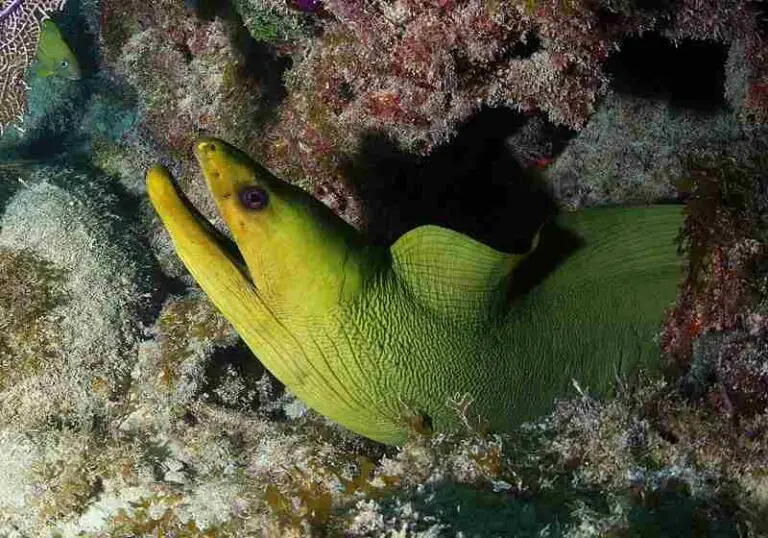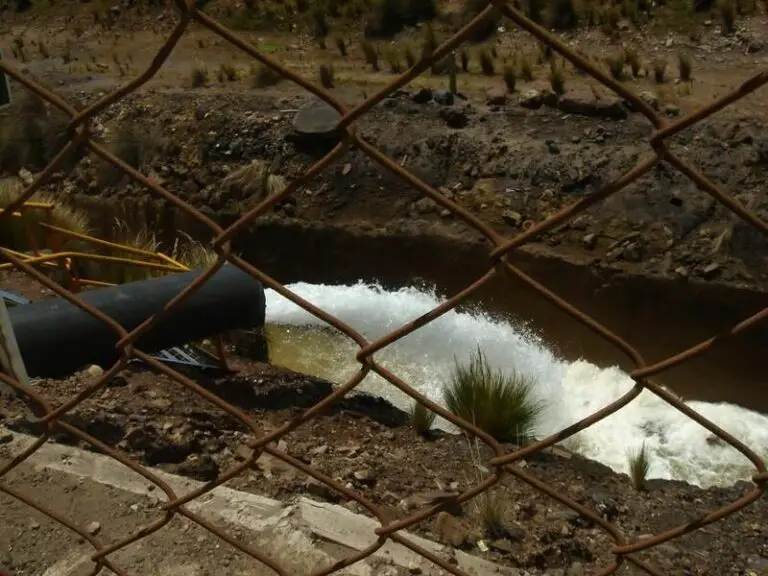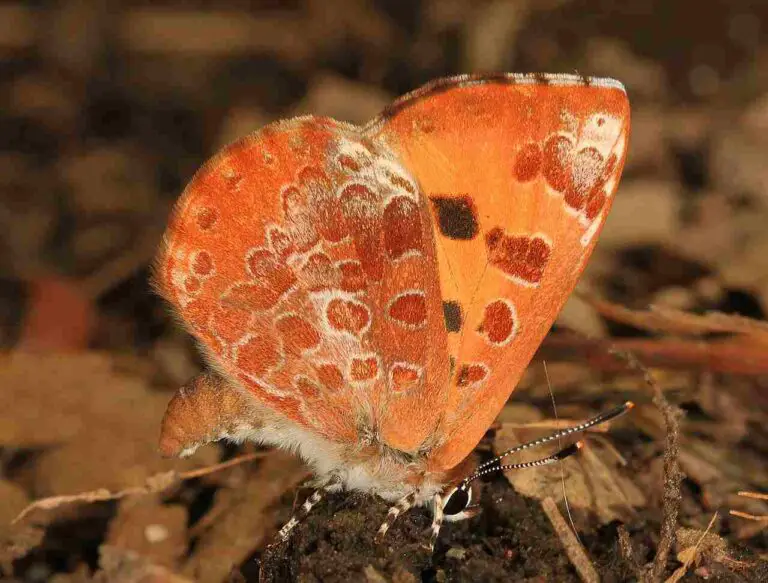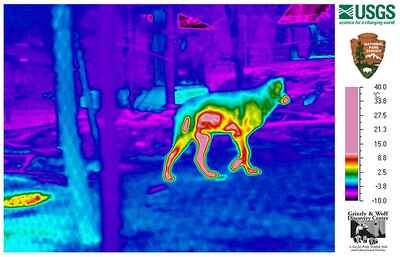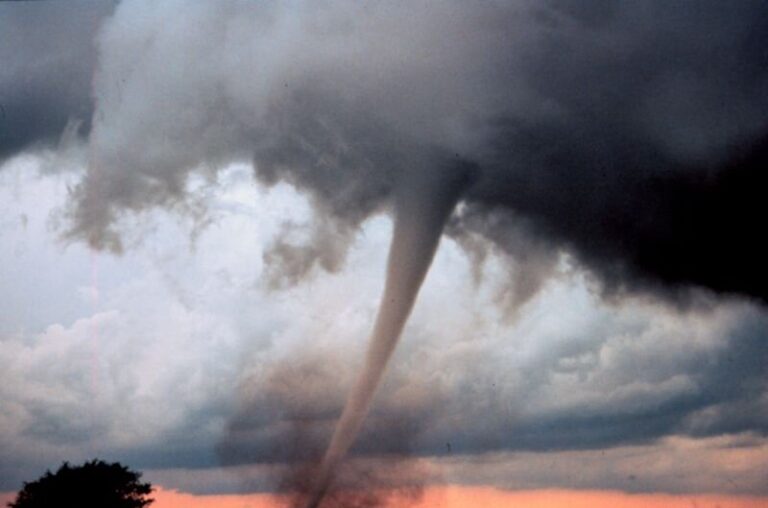23+ Dangerous Animals In Alaska And Their Characteristics
-
Brown Bear (Grizzly Bear)
The Brown Bear, also known as the Grizzly Bear, is one of Alaska’s most formidable and iconic predators. Found across the state, particularly in dense forests and river valleys, these bears are known for their massive size, powerful muscles, and formidable claws. A typical adult male can weigh between 300 and 600 pounds, with some individuals exceeding 1,000 pounds. Grizzly Bears are omnivorous, feeding on a varied diet that includes berries, roots, fish, and occasionally large mammals. Despite their generally solitary nature, they can be highly aggressive if they feel threatened or if their cubs are in danger. Encounters with humans can be dangerous, especially if the bear is surprised or cornered, making it crucial for hikers and campers in Alaska’s wilderness to take precautions, such as carrying bear spray and making noise to avoid startling these majestic but potentially dangerous animals.
-
Black Bear
Black Bears are common throughout Alaska’s forests and are typically smaller than Brown Bears. Despite their name, they can range in color from black to brown, cinnamon, or even blonde. Weighing between 100 and 600 pounds, they are known for their agility, climbing skills, and a more shy and elusive nature compared to Grizzly Bears. Black Bears are omnivores, eating fruits, nuts, insects, and small mammals. Although generally less aggressive, they can still pose a risk to humans if provoked or if they associate people with food. Proper food storage and awareness in bear habitats are essential to prevent conflicts.
-
Polar Bear
Polar Bears are the largest bears and the most carnivorous, primarily found in Alaska’s Arctic regions. With a thick layer of blubber and dense fur, they’re perfectly adapted to the cold environment. Weighing between 900 and 1,600 pounds, they primarily hunt seals on sea ice but will also scavenge and even attack large animals like walruses if food is scarce. Due to climate change, their habitat is shrinking, which can lead to more frequent encounters with humans. Polar Bears are extremely dangerous when threatened or hungry, making safety precautions vital for those in Arctic regions.
-
Gray Wolf
The Gray Wolf is a highly adaptable and social predator found across Alaska. Wolves typically live in packs, with a complex social structure, and are known for their coordinated hunting techniques. Weighing between 60 and 150 pounds, they are apex predators, preying on large ungulates like moose and caribou, but they can also hunt smaller animals. While generally avoiding humans, they can pose a risk if they lose their natural fear of people, often due to food habituation. Maintaining a safe distance and respecting their space is critical to avoiding conflict.
-
Wolverine

Wolverines are solitary, fierce carnivores found in Alaska’s remote and rugged terrains. Despite their relatively small size, typically weighing between 20 and 55 pounds, they are known for their strength and ferocity, capable of taking down prey much larger than themselves. Wolverines have a varied diet, scavenging and hunting for smaller mammals and birds, but they can be aggressive when defending territory or food. Their elusive nature makes encounters with humans rare, but when they do occur, it’s essential to give them a wide berth.
-
Moose
Moose are the largest members of the deer family, with adult males reaching weights of up to 1,600 pounds and standing over six feet tall at the shoulder. Found throughout Alaska’s forests and wetlands, these massive herbivores are generally peaceful but can be highly aggressive during the mating season or when defending calves. Moose can cause serious injury or even death if they charge, using their powerful legs and massive antlers as weapons. Given their size and unpredictability, it’s crucial for humans to keep a safe distance and avoid startling them.
-
Lynx
The Lynx is a medium-sized wildcat found in Alaska’s boreal forests and tundra regions. Recognized by its tufted ears and short tail, the Lynx is a solitary and elusive hunter, typically preying on snowshoe hares and other small mammals. Weighing between 18 and 45 pounds, they are agile climbers and stealthy stalkers. While Lynx generally avoid human interaction, they can become aggressive if cornered or threatened. Due to their natural camouflage, they are difficult to spot in the wild, but if encountered, it’s best to maintain a safe distance and avoid sudden movements.
-
Bald Eagle
The Bald Eagle, a symbol of strength and freedom, is also a formidable predator found throughout Alaska. With a wingspan of over six feet and powerful talons, Bald Eagles primarily feed on fish but will also scavenge and prey on small mammals and birds. Despite their majestic appearance, they can be aggressive when protecting their nests or food sources. Although attacks on humans are rare, they can pose a threat to small pets or if their territory is encroached upon. Maintaining a respectful distance and avoiding nesting areas can help prevent conflicts.
-
Northern Pacific Rattlesnake
The Northern Pacific Rattlesnake is the only venomous snake in Alaska, though its range is quite limited. These snakes are usually found in rocky areas and open forests, using their rattle to warn off threats. While their venom can be dangerous, bites are rare and typically occur when people accidentally disturb them. If bitten, immediate medical attention is crucial, but most encounters can be avoided by being cautious when hiking or walking through their habitats. Proper footwear and paying attention to surroundings are essential for safety.
-
Orca (Killer Whale)
Orcas, also known as Killer Whales, are highly intelligent marine predators found in Alaska’s coastal waters. They are the largest members of the dolphin family, with males reaching lengths of up to 30 feet and weighing over 10,000 pounds. Orcas are social creatures, often living in complex family groups known as pods, and they are skilled hunters, preying on fish, seals, and even other whales. Although Orcas are not known to attack humans in the wild, they can be aggressive when hunting or if they feel threatened. Observing them from a safe distance and respecting their natural behavior are key to avoiding potential dangers.
-
Sea Lion
Sea Lions are large marine mammals found along Alaska’s coastlines, with adult males weighing over 1,000 pounds. They are social creatures, often gathering in large groups on rocky shores and islands. Sea Lions primarily feed on fish and squid but can be aggressive during mating season or when protecting their territory. While generally not a threat to humans, they can pose a danger if approached too closely, especially if they feel threatened. Respecting their space and keeping a safe distance is crucial for safety when encountering them in the wild.
-
Steller Sea Lion
The Steller Sea Lion is the largest of the sea lion species, with males reaching weights of over 2,500 pounds. Found in the northern Pacific region, including Alaska, these massive marine mammals are known for their impressive size and loud vocalizations. Steller Sea Lions primarily feed on fish and squid, and they gather in large groups for breeding and resting. While they generally avoid humans, they can become aggressive if their space is invaded, particularly during breeding season. When observing these creatures, it’s vital to maintain a safe distance and avoid disturbing their natural behaviors.
-
Harbor Seal
Harbor Seals are common along Alaska’s coasts, with their characteristic spotted coats and rounded bodies. These smaller seals, typically weighing between 100 and 300 pounds, are curious by nature but generally shy around humans. They spend time both in the water and on land, feeding on fish, crustaceans, and mollusks. Harbor Seals can become aggressive when threatened or if their pups are in danger, and their bites can be severe. When observing these seals, it’s essential to keep a safe distance and avoid disturbing their resting or pupping sites to prevent any aggressive encounters.
-
Humpback Whale
Humpback Whales are majestic giants known for their acrobatic breaches and complex songs. Found in Alaska’s coastal waters, these whales can reach lengths of up to 60 feet and weigh over 40 tons. Humpback Whales feed on krill and small fish, often using their unique bubble-net feeding technique. Despite their gentle nature, their sheer size makes them potentially dangerous to humans, especially in close encounters or boating accidents. Maintaining a safe distance and adhering to whale-watching guidelines are essential to avoid disturbing or endangering these magnificent creatures.
-
Bison
Bison, or American Buffalo, are large, robust mammals with a distinctive humped back and thick brown fur. Weighing up to 2,000 pounds, these creatures once roamed across much of North America but are now found in limited areas, including parts of Alaska. Bison are herbivores, feeding on grasses and other vegetation, but they can be aggressive if provoked, especially during mating season or when protecting their calves. Their powerful legs and horns make them potentially dangerous, so it’s crucial to maintain a safe distance and avoid sudden movements when observing them in the wild.
-
Musk Ox
The Musk Ox is a shaggy, hardy mammal found in Alaska’s tundra regions, known for its long, flowing fur and large, curved horns. Weighing up to 900 pounds, Musk Oxen live in herds and are well-adapted to the harsh Arctic climate. Despite their peaceful appearance, they can be aggressive when threatened, especially if their calves are at risk. Musk Oxen are known to form protective circles around their young, using their horns as a formidable defense. Keeping a safe distance and avoiding sudden movements are key to avoiding conflicts with these powerful animals.
-
Red Fox
The Red Fox is a small but cunning predator found throughout Alaska’s forests and tundra regions. Recognized by its reddish fur and bushy tail, the Red Fox is an adaptable omnivore, feeding on small mammals, birds, and even human garbage. While generally shy and avoiding direct human contact, they can become bold in urban areas where food sources are readily available. Although not typically dangerous, they can carry diseases like rabies, making it important to avoid contact and ensure proper disposal of waste to discourage their presence near human settlements.
-
Beaver
Beavers are large, industrious rodents known for their dam-building skills, commonly found in Alaska’s rivers and lakes. Weighing up to 60 pounds, these creatures play a significant role in shaping their environment, creating wetlands that benefit other wildlife. Although beavers are generally not aggressive, they can be defensive when protecting their territory or young. They use their sharp teeth and strong tails to ward off threats. Encounters with beavers can be dangerous if they feel cornered, so it’s best to keep a safe distance and avoid disturbing their dams or lodges.
-
Harpy Eagle
The Harpy Eagle is one of the largest and most powerful eagles, though its presence in Alaska is rare, mainly found in the rainforests of Central and South America. This bird of prey has impressive talons and can weigh up to 20 pounds, with a wingspan exceeding seven feet. Despite its rarity in Alaska, its formidable reputation as a hunter is well-deserved, as it preys on large mammals like monkeys and sloths. Harpy Eagles are not a direct threat to humans, but their strength and sharp talons make them potentially dangerous if provoked. Respecting their habitat and avoiding direct interaction is key to safety.
-
Great Horned Owl
The Great Horned Owl is a large, nocturnal bird of prey commonly found in Alaska’s forests and open landscapes. Recognizable by its “horns” or ear tufts, this owl can have a wingspan of up to five feet and is known for its sharp talons and powerful beak. The Great Horned Owl preys on a variety of animals, from small mammals to birds, and is a skilled hunter, often striking silently from the air. While generally not aggressive toward humans, it can be protective of its territory and nest. Maintaining a safe distance and avoiding nesting areas can help prevent any unexpected encounters.
-
Common Raven
The Common Raven is a highly intelligent and adaptable bird found throughout Alaska. With its glossy black feathers and large size, the raven is a familiar sight in both urban and rural areas. Ravens are known for their problem-solving abilities and often scavenge for food, including human garbage. While not typically dangerous, they can become aggressive if they feel threatened or if they’re protecting a nesting area. Ravens are also known to harass other birds and animals, showing their bold nature. To avoid conflicts, it’s best to avoid feeding them and ensure proper waste disposal.
-
Golden Eagle
The Golden Eagle is a large and majestic bird of prey found in Alaska’s mountains and open landscapes. With a wingspan of up to seven feet, these eagles are powerful hunters, preying on mammals such as rabbits, hares, and even young deer. They are known for their keen eyesight and strong talons. Golden Eagles are generally not a threat to humans, but they can be protective of their territory and nests, especially during the breeding season. Observing them from a safe distance and avoiding their nesting areas is crucial to avoiding any potential conflicts.
-
Mountain Goat
The Mountain Goat is a nimble and sure-footed creature found in Alaska’s mountainous regions. Recognizable by their thick white fur and curved horns, Mountain Goats are adapted to steep, rocky terrain and can climb with remarkable agility. Adult males can weigh up to 300 pounds, and while they typically keep to themselves, they can become aggressive during mating season or if their territory is encroached upon. The sharp horns and strong legs make them potentially dangerous. When encountering Mountain Goats, it’s best to maintain a safe distance and avoid startling them.
-
Northern Pacific Rattlesnake
Though rare in Alaska, the Northern Pacific Rattlesnake is a venomous snake found in some of the state’s southern regions. Known for its distinctive rattle and diamond-shaped pattern, this snake uses its rattle as a warning when threatened. The venom can be dangerous, requiring immediate medical attention if bitten. However, rattlesnakes are generally shy and will avoid humans if given the chance. When hiking or walking in their habitats, it’s important to stay on marked trails, wear appropriate footwear, and be cautious to avoid startling a resting snake.
| Dangerous Animal | Description |
| Brown Bear (Grizzly) |
Massive predators known for their size and aggression, often found in forested and river valley habitats.
|
| Black Bear |
Smaller than Grizzly Bears, they are omnivorous and agile, commonly found in Alaska’s forests, posing risks if provoked or habituated.
|
| Polar Bear |
The largest carnivores, adapted to the Arctic environment, they can be aggressive when hungry or threatened, especially due to habitat loss.
|
| Gray Wolf |
Social predators with a complex hunting strategy, they are typically found in packs and can be dangerous if habituated to humans.
|
| Wolverine |
Solitary carnivores with remarkable strength, they are elusive but can be aggressive when defending territory or food.
|
| Moose |
Massive herbivores known for their size and occasional aggressiveness, especially during mating season or when protecting calves.
|
| Lynx |
Stealthy wildcats with tufted ears, they are solitary hunters but can become aggressive if cornered or threatened.
|
| Bald Eagle |
Iconic birds of prey, they primarily feed on fish and can be aggressive when protecting nests or territory.
|
| Northern Pacific Rattlesnake |
The only venomous snake in Alaska, encounters are rare but potentially dangerous, especially if provoked.
|
| Orca (Killer Whale) |
Apex predators of the ocean, they are highly intelligent and social, posing little threat to humans but can be aggressive in hunting.
|
| Sea Lion |
Large marine mammals found along coastlines, they can be aggressive during mating season or when protecting territory.
|
| Steller Sea Lion |
The largest of the sea lions, they are formidable creatures that can become aggressive if their space is invaded, especially during breeding season.
|
| Harbor Seal |
Common seals along Alaska’s coast, they are generally shy but can be defensive, particularly around their pups.
|
| Humpback Whale |
Majestic giants of the sea, they are not typically dangerous to humans but can pose risks in close encounters or boating accidents.
|
| Bison |
Massive herbivores with powerful defenses, they can be aggressive when threatened, especially during mating season or calf protection.
|
| Musk Ox |
Hardy mammals of the tundra, they form protective circles around calves and can be aggressive if threatened.
|
| Red Fox |
Cunning predators found across various habitats, they are generally shy but can become bold in urban areas.
|
| Beaver |
Industrious rodents known for dam-building, they are not typically aggressive but can be defensive when protecting territory or young.
|

